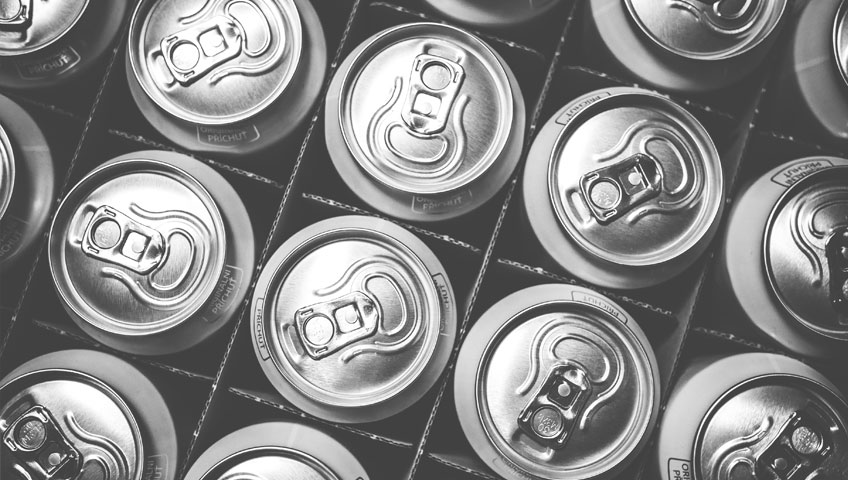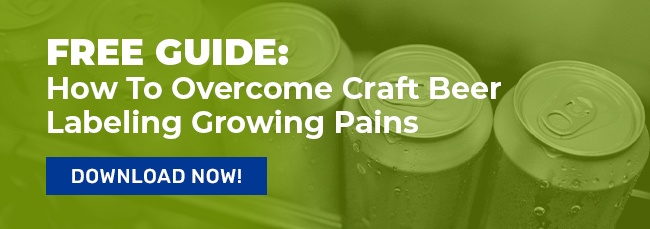
Finding The Right Beer Can Labeling Equipment For Your Business
In the past, commercial beer and craft beer was easy to distinguish, based on packaging alone. Most commercial beer came in cans while craft brews used bottles. But, that’s starting to change with the introduction of affordable beer can labeling equipment. By using labels, you can lower costs on printing while reaping the quality, flexibility and cost benefits of cans.
Why are Cans Growing in Popularity?
Over the past decade, aluminum cans have gone from being almost non-existent in the craft brew market to making up about one-third of total packaged production. According to data gathered by the Brewers Association and IRI Group, this shift is concentrated in breweries making 100,000 barrels or less per year. On average, 45% of packaged beer from these small companies comes in cans. For these small producers, using aluminum cans improves quality while cutting costs and simplifying logistics:
- Aluminum cans block all light and keep oxygen from interacting with the beer, keeping it fresh longer than bottles.
- A filled aluminum can weighs about 1/3 less than a filled bottle and it’s easier to stack – saving substantial money on transport. Cans are also easier to ship in small packages, making it practical to offer canned beer through mail order.
- Since they aren’t breakable, cans are allowed in places where glass bottles are banned, like beaches, music venues and sports parks.
- Aluminum is more eco-friendly than glass. Aluminum cans are easy to recycle and have a high recycled material content. (On average, an aluminum can is made of 86% recycled material.) Two out of every three cans is recycled, compared to one out of four glass bottles (and one out of 30 plastic bottles). Turnaround time for recycling can be as little as 6 weeks. Transporting and refrigeration-related emissions are also 35-49% lower than glass bottles.
- Consumer preferences are starting to shift. Cans used to be reserved for cheap, low-quality beer. However, as more craft beer companies have shifted to cans and worked to educate consumers on the container’s benefits, buyers are more accepting of canned craft brews.
- The packaging industry is catching up to the demands of the craft brew industry. Smaller, less costly labeling equipment is bringing down prices to be in line with bottling equipment. If you’re making the leap from hand-filled and labeled bottles, canning is now a viable, affordable option!
Why Should I Use Beer Can Labels Instead of Pre-Printed Cans?
In the past, the biggest stumbling block for small-scale producers has been can orders. Printed can producers typically require truckload orders, which is usually in the range of 150,000 cans. This puts printed cans out of reach for most small producers (and even large craft brew companies that offer seasonal brews).
For small batches, can labels offer huge cost benefits. Labeling is a just-in-time process, letting you adjust output to demand. Instead of keeping a variety of can designs in stock, you only need to stock one type of can, switching labels to match your product. A single pallet of labels can cover several pallets of cans.
Bare aluminum beer cans with no printing are easy to source and cheaper than pre-printed cans, especially for small volume products. Alternatively, labels can be combined with printed cans, using a uniform can design paired with a label to get the flexibility of labels with a full-coverage design.
Either way, you can scale back significantly on stock and order sizes, keeping your can supply in line with your brewery’s output and storage space.
Where Do Beer Can Labels Fit in the Packaging Process?
By the time a can reaches beer can labeling equipment, it’s already been cleaned, filled, lidded and cleaned again – ideal for applying labels.
Once on the wrap labeling system, the product (beer can) travels on a continuous conveyor, receives a label, and is immediately driven through a wrap belt that spins the can and fully applies the label. This sort of application typically results in a higher PPM (product per minute). The labels are pressure-sensitive, so they’re ready to pack as soon as they leave the machine.
What Should I Look for in a Beer Can Labeler?
Solid color labels can be applied with labeling equipment at a considerably low price point. However, colored labels are also noticeably separate from the can. These labels are mostly used by the smallest breweries (and even some homebrewers).
Clear labels conform to the can, making them indistinguishable from printed cans. Automatic labeling machines usually use light sensors to determine label and can orientation. To use clear labels, you’ll need to upgrade to capacitive sensors, increasing cost to the labeling machine. Keep in mind that “clear” does not have to mean translucent. (Most or all of the label can carry pigments.)
The craft brew market is dominated by three can sizes:
– 12 oz. standard drink can
– 16 oz “pounder” can
– 32 oz. growler can – a.k.a. the “crowler”
With the right beer can labeler, you can easily switch between can sizes, adding flexibility without increasing equipment costs. Speed will vary depending on the length of the labels being used. A standard label for a 12 oz. can is 8 inches long, while a crowler label is 9 inches in length. That means piece-per-minute will be about 12% slower when producing crowlers as opposed to 12 oz. cans. In practice, this shouldn’t be much of an issue since filling station times will see a larger increase than labeling times.
Our 360a WR Wrap System is an ideal turn-key solution for low production runs of can labeling. It works with products of varying sizes, and the onboard computer can save several label configurations. Once you have a container calibrated, you can bring the settings back up when you’re ready to switch to producing it.
The economy scale system comes equipped with a sturdy modular mounting base to mount the applicator. If you already have a conveyor, the labeler can be purchased with our easy-to-move H-base stand or precision positioning T-base stand or precision positioning T-base stand. Just add the wrap station and, with some basic setup, you can easily start automating your labeling process!
We Can Help You Make the Upgrade to Canning
Is your brewery ready to make the switch to aluminum cans?
Contact CTM Labeling Systems to be directed to a local distributor who can set you up with beer can labeling equipment that fits your production line – big or small!





